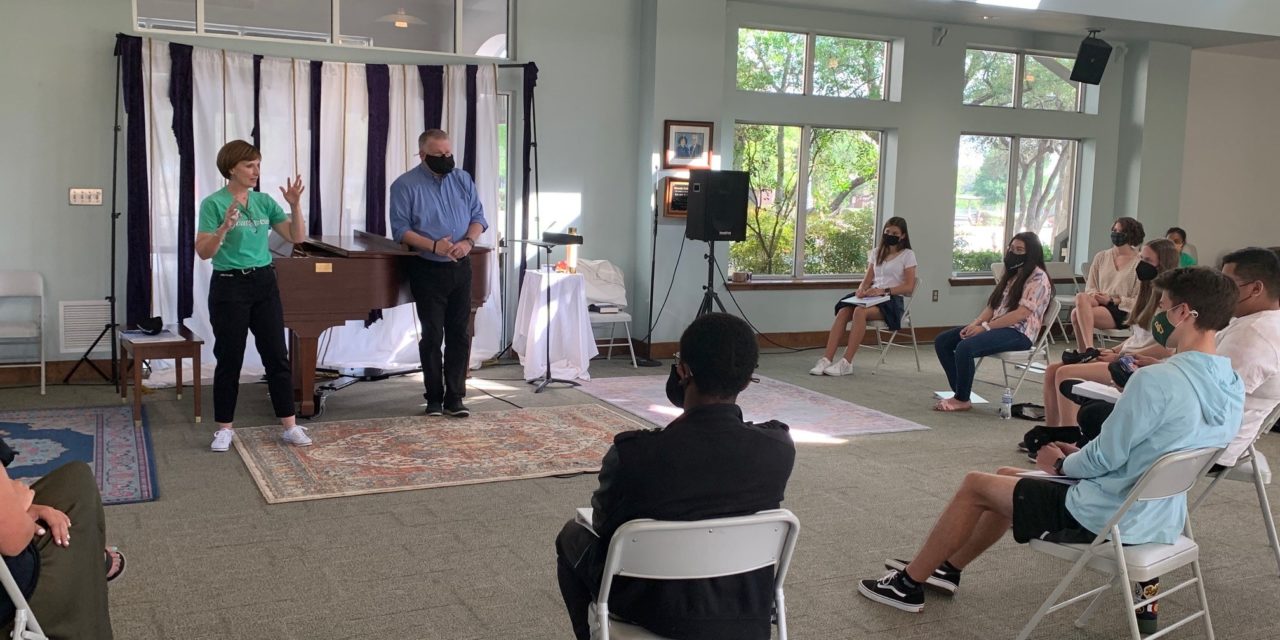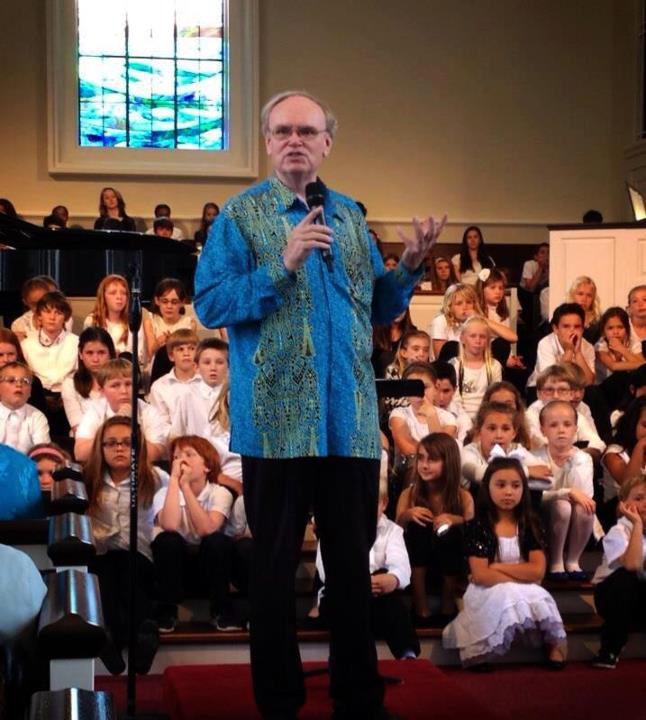In Student Choirs, Distance Can Be Used to Develop Choral Sound (Photo)
Part 2
During the pandemic, I have often wondered if we will ever return to packed out choir lofts again. That question does not make me sad, but it does make me curious. How long have we worked with the idea that, as long as there was one more square inch of space in our lofts or rehearsal spaces, then we need and want more singers? Always more, more, more.
Over twenty-five years and 100+ YouthCUE festivals, we have packed kids into venues tighter than we could line up chairs in that same space. For instance, during fifteen years (and counting) of Baylor Festivals, the students have often been so compressed on standing risers on the stage of Jones Hall that, when it came time for them to sit (on the risers), there was simply not enough sitting space. We wedged them into standing positions, seemingly with a shoehorn, but there was not enough room from those same kids to sit in the same places where they stood. Simple physics provides an explanation: the human body takes up the least amount of floor space when it is in a standing position. Sitting (or even more so, lying down) requires more in the way of floor footage.
Somehow, I doubt we will ever really return to that part of our old normal. I believe the days of smashing people together … even children and teenagers who generally enjoy being close … have changed. One of the things the pandemic has shown us is that every person should have the right to breathe fresh oxygen and to enjoy a modicum of personal space preventing them from being continually touched on all sides.
As mentioned in last month’s edition of YouthCUE, I believe it is entirely possible to use the “minimum required personal space” (whatever that turns out to be) to actually build choral sound rather than diminish it.
I challenge us all to try something new when we regather our choirs in the weeks and months ahead. All we need for this ongoing exercise is some space in our rehearsal areas, a chair for each student, a bit of imagination, and some creative teaching and word-painting on the part of us directors.
When we seat our students at appropriate distances (not jammed up!), have the students imagine exactly 50% of the space that exists between them and their nearest singing neighbors (to the side, in front, and behind). But it’s not just floor space; it’s also space that creates a column going upward from floor to ceiling. Think of it as a tall, round column surrounding them. This is the singer’s space which needs to be filled with sound. Each singer’s imagined column gently touches and maybe even slightly overlaps their neighbor’s column and sound.
But not just any sound! And not just a certain decibel reading! Yes, it needs to be heard and felt by the neighboring singers, but it also needs to be beautiful, round, and tall … just like the column of space itself. We may even want to experiment with colors … have the students produce sounds that can be described by various colors and hues.
Creating that much sound will be a stretch for many of our neophyte singers. Key element are opening the mouth tall, supporting the sound with proper breathing, and forming nice, pleasant vowels. Most are not accustomed to producing that much vocal substance. The kicker here is to simultaneously increase the singers’ listening awareness so they are singing together and not just as a bunch of newfound soloists. As the students grow and develop in their understanding of this concept, they will learn to listen far beyond just their closest-singer neighbors. They will also be listening to other sections, their fellow-singers two rows away and, indeed, to the whole choir.
This concept will not happen in just one exercise. It will need to be reinforced over and over again in the weeks and months to come. But as we do reinforce it, remind, re-teach, and add our own innovations, our student choir’s sound will likely grow exponentially. As one or two students catch on to the concept, more and more will be drawn into the vortex of the beautiful, energized sound.
I encourage all of us to put this concept into action.
And please let us know how it is working for you!
Randy Edwards [email protected]










